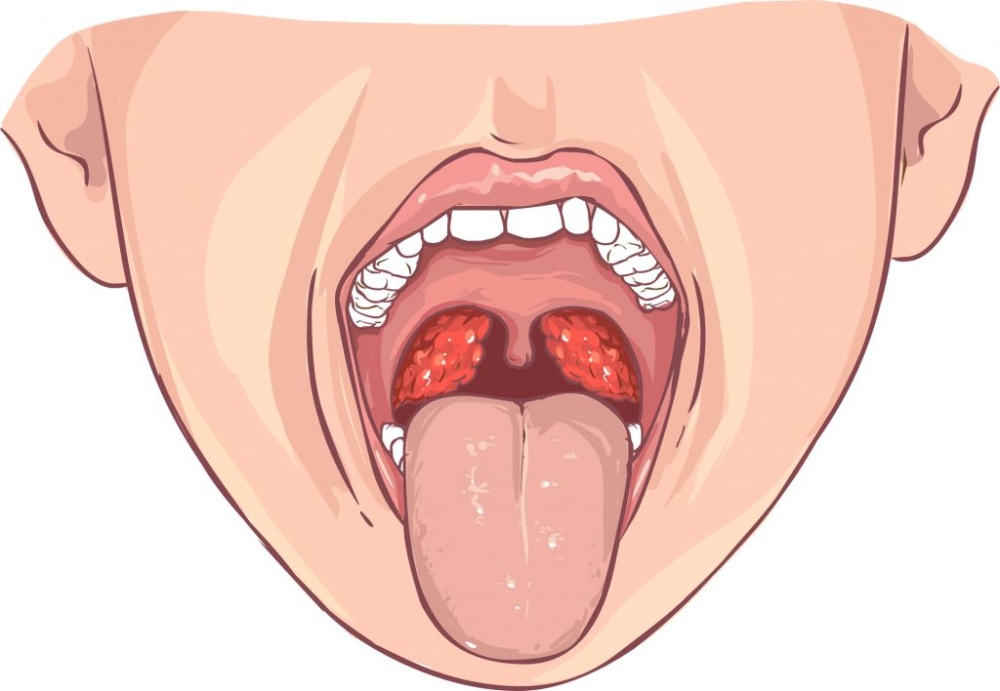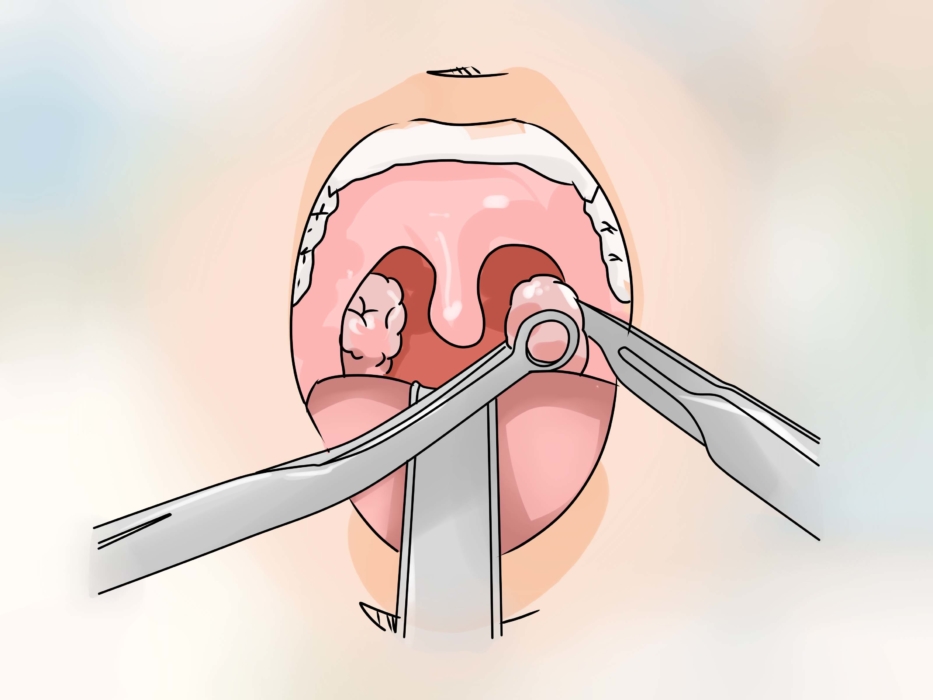Tonsil inflammation is quite common in children of preschool and primary school age. However, adults often suffer from this ailment, which in certain situations can provoke complications. To avoid the serious consequences of the disease, it is very important to know how to treat chronic tonsillitis.
Material Content:
What is chronic tonsillitis
Chronic tonsillitis is an inflammation of the tonsils or tonsils that develops as a result of frequent tonsillitis. Exacerbations up to 4-5 times a year are characteristic of the disease.
Tonsils play an important role in the body. Being an element of the immune system, they, like a filter, collect harmful microorganisms on themselves, preventing them from entering the respiratory tract. Glands have peculiar hollows - gaps. It is in them that pathogenic bacteria, fungi and viruses settle. Frequent colds prevent the tonsils from self-cleaning. Microbes accumulate in the gaps, because of which purulent plugs form in them and inflammation occurs.
The risk of developing an ailment increases with a decrease in the body's defenses, for example, with hypothermia or after an infectious disease (ARVI, scarlet fever, etc.). And also immunity can be weakened by groundless antibiotic therapy and prolonged use of anti-inflammatory painkillers.
In addition, prolonged nasal congestion, decayed teeth, sinusitis, and curvature of the nasal septum can contribute to the development of tonsillitis. The causative agents of tonsillitis are most often staphylococci and streptococci, however, microscopic examination in the material taken from the tonsils often reveals various fungi and other microorganisms.
Untreated chronic tonsillitis can lead to serious complications, among which pyelonephritis, endocarditis, prostatitis and even infertility are distinguished.
Symptoms of the disease
Symptoms of the disease are nonspecific. They can be observed not only with tonsillitis, but also with other inflammatory diseases of the throat and nasopharynx. In some cases, the symptoms are mild. Most often, patients with simple inflammation of the tonsils are concerned about the following manifestations:
- pain and discomfort when swallowing;
- sensation of a foreign object in the throat;
- white or yellowish plaque on tonsils;
- bad breath;
- voice change;
- an increase in local lymph nodes;
- in rare cases, cough.
In the later stages of the disease, there may be an increase in body temperature, weakness, malaise, joint pain, cardiac abnormalities.
It is impossible to make an accurate diagnosis at home, so if these symptoms appear, you need to see an otolaryngologist.
Features of treatment in adults and children
Treatment for tonsillitis can be conservative and prompt. In the first case, medications are used that eliminate inflammation and the symptoms of the disease. Preparations for the treatment of chronic tonsillitis should be selected by a specialist. With a radical method of treatment, complete or partial removal of inflamed glands is performed. The tactics of therapy are selected taking into account the frequency of exacerbations of the disease, the severity of the pathological process and the advisability of conservative treatment. Therapy regimens for children and adults differ little from each other.
Preparations for local and systemic use
Drug treatment of tonsillitis with its exacerbation often involves taking systemic antibiotics with a wide spectrum of action. Quite often, in this case, penicillins are used in the form of a suspension for children and tablets or capsules for adults. In the remission phase, antibiotic therapy is not carried out, since antibacterial agents contribute to the disruption of normal microflora and a decrease in the body's defenses, which can provoke an exacerbation of tonsillitis.
Treatment of chronic tonsillitis in adults and children includes the treatment of tonsil lacunae with antibacterial solutions using a special cannula and syringe. Manipulation is carried out exclusively by medical personnel. As therapeutic agents, solutions of penicillins, sulfacyl sodium, grammidine are used. Before starting the procedure, the doctor studies the structure of the tonsils of the patient with a special probe, and then individually selects a washing instrument and a solution.
In addition, local antiseptics are used to treat inflamed tonsils. Most often, the following drugs are prescribed for this:
- Miramistin;
- iodine preparations (Lugol's solution, “Yoks”)
- propolis preparations ("Proposol", propolis tincture).
Patients may also be prescribed lozenges or lozenges containing local antiseptics.
A significant role in the treatment of chronic tonsillitis is given to immunomodulators. These funds help restore the body's defenses and help it fight infection in a natural way.
Folk remedies for tonsillitis
In combination with the main methods of treating tonsillitis, folk remedies can also be used. As an alternative treatment for tonsillitis, the most commonly used are:
- Rinse with soda, salt and iodine.1 teaspoon of baking soda and salt is dissolved in 250 ml of water, 2 drops of iodine solution are added. The resulting remedy gargle twice a day.
- Rinse with a decoction of the flowers of a pharmaceutical chamomile, marigolds and eucalyptus leaves. Plant materials are mixed in equal amounts. 1 tablespoon of the collection collected is poured into 350-450 ml of hot water, kept for 5 minutes in a water bath and left for 40 minutes. Filter the infusion and rinse their throats twice a day.
- Means for ingestion with violet, St. John's wort and potato juice. 3 tablespoons of dried violet flowers are poured into 500 ml of boiling water. Insist for half an hour. Then 2 tablespoons of potato juice and a teaspoon of St. John's wort tincture are added to the infusion. The tool is drunk 1 tablespoon three times a day.
- Inhalation with essential oils. For the procedure, 1-2 liters of water are brought to a boil and 2-3 drops of essential oil are added to it. Gently inhale the vapor for 10 minutes. With tonsillitis for inhalation, you can use the essential oil of thuja, fir, eucalyptus, thyme. This method helps to relieve the symptoms of the disease.
- Means with propolis, honey and butter. Equal amounts of butter and propolis are melted in a water bath to a liquid state. Honey is added to the mixture, which should be no more than a quarter of the total drug volume. The ingredients are mixed. The finished product is stored in a refrigerator in a glass container and taken in half a teaspoon three times a day.
In folk medicine, anti-inflammatory and antiseptic medicinal plants are widely used to treat tonsillitis. Quite often with this disease, it is recommended to gargle with a decoction of St. John's wort, sage, yarrow, etc.
With caution, the use of folk remedies should be treated during pregnancy. Some herbs can increase the uterine tone, which in the early stages threatens to miscarriage.
Surgical removal of tonsils
Treatment of chronic tonsillitis in children and adults is often carried out surgically. The operation to remove the tonsils is called tonsillectomy. It is carried out in cases where conservative treatment does not bring results, the patient's condition worsens, and the normal tissue of the tonsils is replaced by connective tissue.
Doctors recommend performing the procedure in a hospital after a preoperative examination followed by follow-up, although in most cases it is performed on an outpatient basis. Usually, the operation is performed under local anesthesia (lidocaine solution) and lasts no more than half an hour. In some cases, children use general anesthesia.
The operation is not complicated and consists in cutting off the affected tissue using a special scalpel and clamp. If necessary, measures are taken to stop the bleeding.
After removal of the tonsils, the following rules should be observed:
- during the day the patient is forbidden to talk and swallow saliva;
- in the first 2-3 days after the procedure, only liquid food is allowed, gradually turning into mashed potatoes;
- in the first 3 days it is forbidden to gargle.
To prevent infectious complications, the patient is prescribed a course of antibiotics.
In certain cases, laser lacunotomy is possible. The method involves "evaporation" of the pathological sections of the tonsils with a laser. The procedure is performed in a polyclinic under local anesthesia.
Prevention Methods
The main way to prevent inflammation of the tonsils is to prevent hypothermia, acute respiratory viral infections and colds. In addition, to prevent inflammation of the tonsils, it is recommended:
- periodically visit the dentist and treat carious teeth on time;
- establish and balance nutrition;
- periodically drink vitamin-mineral complexes;
- observe the rules of personal hygiene;
- Wash fruits thoroughly before eating.
Unfortunately, no treatment, even surgery, can guarantee the ultimate cure for chronic tonsillitis. However, taking simple preventive measures, you can significantly reduce the frequency of its exacerbations.
- Maria
















